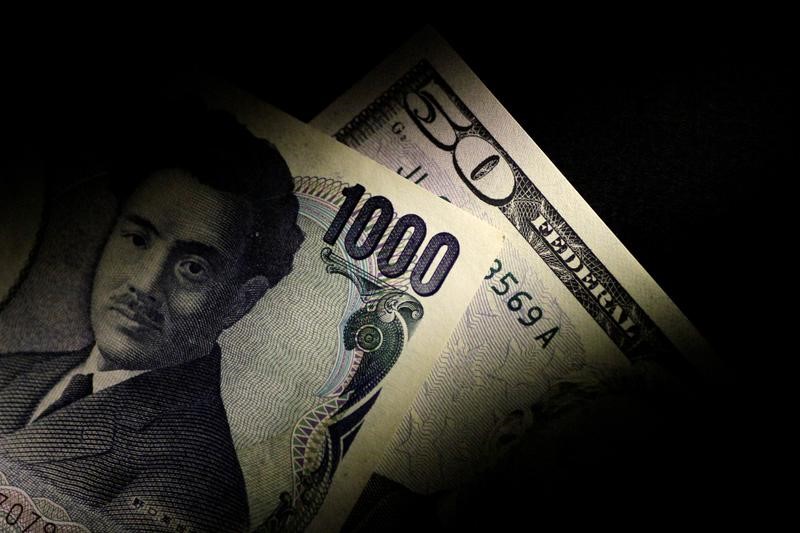By Peter Nurse
Investing.com - The U.S. dollar edged lower in early European trade Thursday as the world’s key finance ministers meet, but remains elevated amid expectations for aggressive Federal Reserve monetary tightening.
At 3:15 AM ET (0715 GMT), the Dollar Index, which tracks the greenback against a basket of six other currencies, traded 0.3% lower at 100.165, retreating from the more than two-year peak of 101.03 seen earlier in the week.
Benchmark 10-year U.S. Treasury yields have pulled back from the highest level since December 2018 at close to 3%, helping the dollar to hand back some recent gains.
However, the buck remains particularly strong against the Japanese yen, with USD/JPY up 0.1% to 128.05, off the two-decade high of 129.43 seen earlier in the week after the Bank of Japan once more stepped in to the bond market to defend its record low yield target.
Japanese Finance Minister Shunichi Suzuki said on Thursday he had explained the yen's "somewhat rapid" declines to his Group of Seven counterparts and is due to meet U.S. Treasury Secretary Janet Yellen later this week.
In a statement issued after their meeting, the leaders said they were closely monitoring global financial markets that have been "volatile," creating a degree of nervousness about whether the G7 might move to combat the rapid moves.
“We had felt that FX intervention would not be seen until the 130 level and even now it is hard to describe market conditions as disorderly enough to justify intervention,” said analysts at ING, in a note.
Federal Reserve Chair Jerome Powell is scheduled to speak later Thursday at the IMF-World Bank spring meetings in Washington.
His comments will be carefully studied with the Fed’s meeting in early May at the forefront of minds, amid expectations that the central bank will hike more aggressively than the quarter percentage point move it announced at its March meeting.
Elsewhere, EUR/USD rose 0.4% to 1.0890, as Vice President Luis de Guindos joined a growing chorus of European Central Bank officials acknowledging the possibility of an interest rate hike as early as July with inflation running at record levels in the European Union.
That said, the pair remains marginally above the 20-month low of 1.0757 with the war in Ukraine weighing along with the uncertainty surrounding the French political presidential election.
There could be further weakness ahead as the euro is being used less often as a global payment currency, posting its biggest percentage-point drop in more than a decade in March, according to data from the Society for Worldwide Interbank Financial Telecommunications, or SWIFT.
AUD/USD fell 0.2% to 0.7436, while USD/CNY rose 0.5% to 6.4501, climbing to its highest level since October 2021 amid concerns about a COVID-induced growth slowdown at the world’s second largest economy.
A prolonged slowdown in China would have substantial global spillovers, IMF Managing Director Kristalina Georgieva said on Thursday, a couple of days after the organization cut its growth forecast for China this year to 4.4%, well below Beijing's target of around 5.5%.
